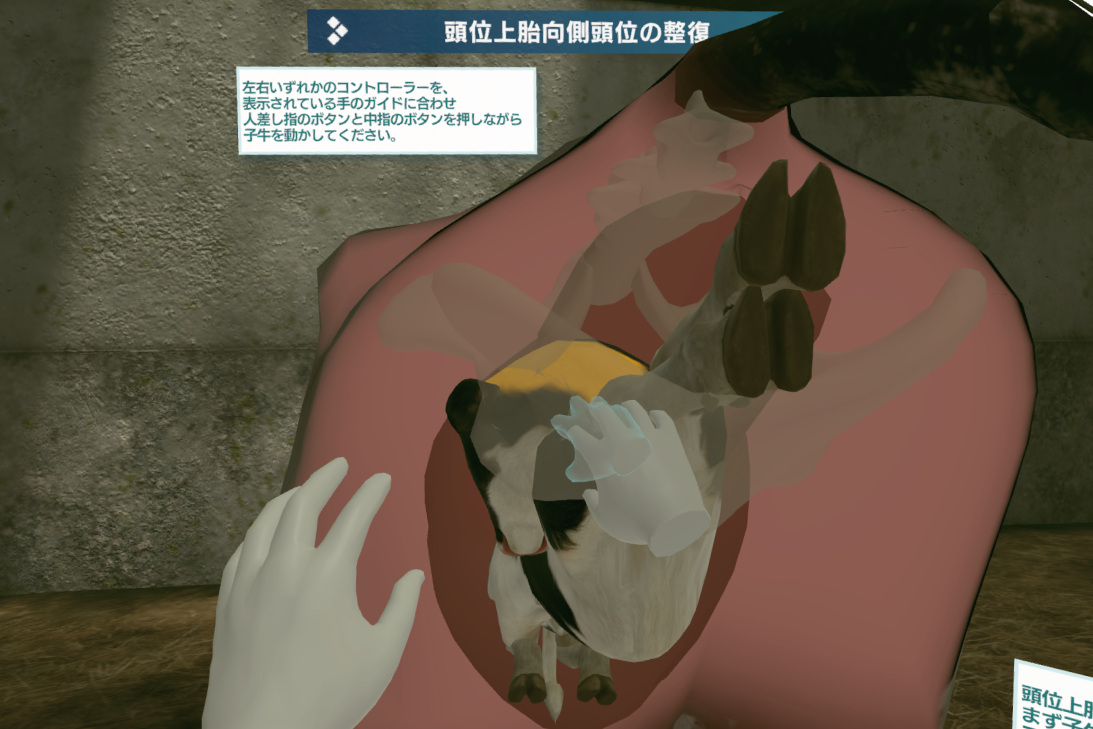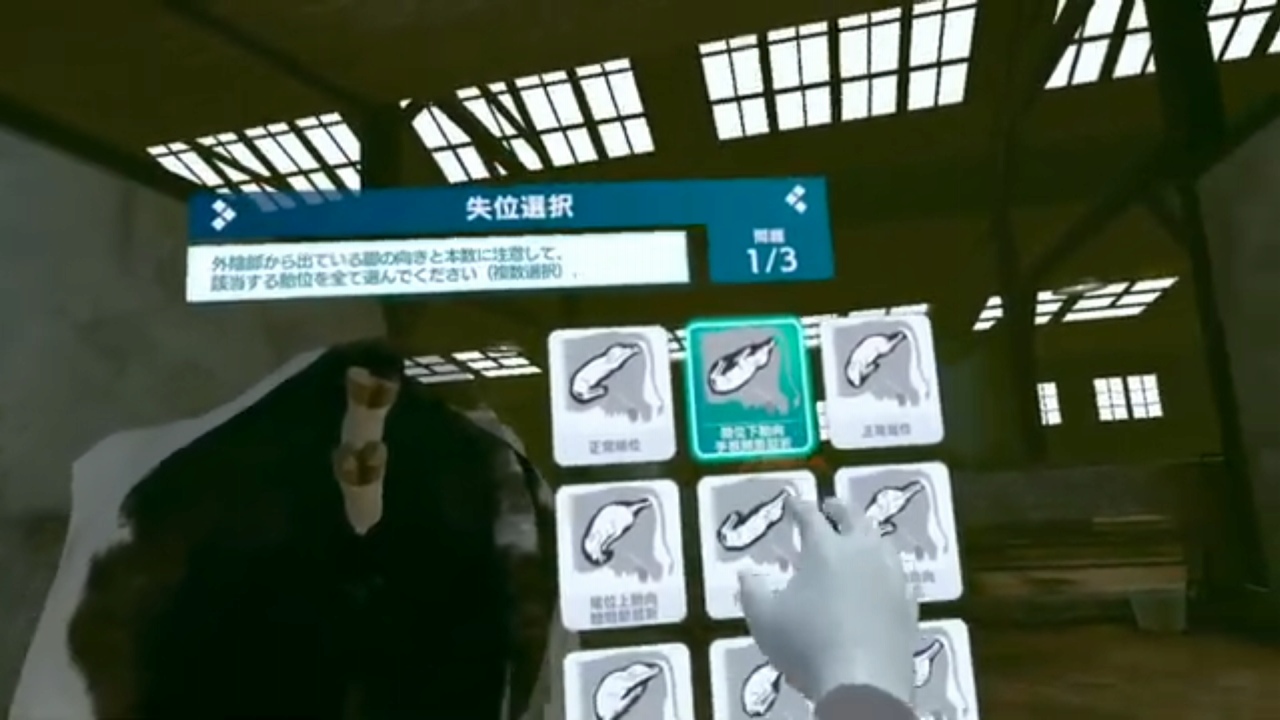Help deliver a calf in VR: Japanese university uses VR for veterinary education

A research group at Japan’s Azabu University led by professor Satoshi Takagi, alongside game developer AMATA and EDUWARD Press, a book publisher specializing in veterinary medicine, has shown off their VR software for helping learn how to assist cows giving birth. Azabu University says they plan to use the software in their classes starting in April.
With the software, users get to see a visualization of a calf in the womb and see the flow of its birth recreated. The goal is for users to be able to learn how to assist when the calf isn’t positioned ideally within the womb. It will also help users better understand a calf’s positioning based on where its hind legs are from the outside.
With the expansion of the livestock industry and increase in cattle both in terms of size and numbers, the ways cattle are being raised is diversifying and the number of difficult births is increasing. The number of calves dying during birth is also increasing year by year (Obihiro University of Agriculture and Veterinary Medicine). If there are more people who know how to properly handle these situations through learning with this VR software, we can possibly expect a decrease in the number of accidents during birth.

Additionally, the development team previously announced another piece of animal-related VR software with the goal of teaching users how to perform a tracheal intubation on a dog. Practicing the procedure on live animals can be dangerous for the animal, and the software also has the advantage of letting users practice multiple times. This series of software is called VETS VR and is a plan to create a realistic study environment with hands-on experience that’s difficult to get through just textbooks and images. Being able to repeatedly go through these medical procedures without risk is likely another strength of VR.
According to Takagi, the use of VR technology for veterinary education is taking place outside of Japan as well, and students who learn through VR are showing higher results on exams. Going forward, maybe we’ll see an increase in VR usage in teaching materials for professions like animal care where it’s difficult to get repeated hands-on experience.
Written by. Nick Mosier based on the original Japanese article (original article’s publication date: 2023-03-22 17:02 JST)




